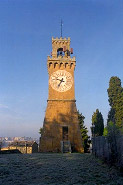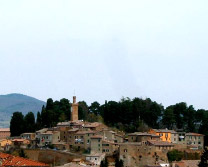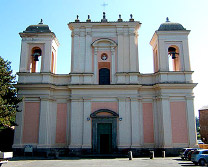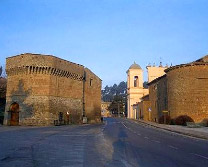B&B Predio San Fernando

Acquapendente
Acquapendente, which is in Lazio, is very close to Tuscany (3 km from Siena’s district) and Umbria. Gracious and charming, this town puts together both beautiful architectural and natural features, as Duomo and Rufeno Mountain.
Mount Rufeno Park has become a natural reserve and it is expanded in a wide area of 3000 ha. Within its territory many animal species can be discovered, starting from foxes, wild boars, hares, squirrels, dormice, barn-owls, porcupines and deer. That’s why it is correct to consider Monte Rufeno kind of a nature lovers paradise. Not far from this town there is the nice borough of Torre Alfina, which castle is a marvellous example of the medieval age.
Acquapendente, thanks to the Via Francigena, had in the past remarkable commercial and cultural exchanges. The famous way of the Longobards was called at the end of the 8th century the Strada dei Franchi, further to the descent of Charlemagne upon Italy. The way connected Acquapendente to the near capital Rome and, in short time, took on strategic character and European importance.
The presence of Etruscan and Roman civilizations is extremely tangible. Visiting the surrounding area, you can see numerous traces and find showing that in the past Acquapendente housed these two great civilizations.
The written documents of the first urban settlement date back to the 9th century (the hamlet of Farisa or Arisa). Places to visit, The Basilica of the Holy Sepulchre, probably dates back to the period of Mathilda of Westfalia (895-968), mother of Otto I. In 1649 the basilica was named cathedral, after the destruction of Castro. The architecture has evident Romanesque shapes, then successive changes modified it till the present state, with markedly baroque appearances.
In the chronicles of Acquapendente P.P. Biondi describes St. Victoria’s church as the most important of the six churches (St. Victoria, St. Lawrence, St. John, St. Peter, St. Angelo, Holy Sepulchre).

St. Clare’s monastery is located on a hill called in the past Poggio del Massaro, situated in the suburbs of the village with interesting architectural shapes. It is worth visiting its characteristic inside.
Once a year on the Sunday of Albis, the town celebrates the "Festival of the Bells", an event that dates back to before 1150 when it used to be a trade fair at which pilgrims from all over Europe on their way to Rome would barter their merchandise.
Another important feast, held on the third Sunday of May, commemorates the expulsion of Barbarossa and is known as the "Madonna del Fiore", ("Our Lady of the Flower") when there is the procession of the "Pugnaloni".
“Pugnaloni”are large compositions of leaves and petals depicting various religious and allegorical subjects.
The Feast of St Anthony also takes place in the month of May and there is a procession of the "Muratori" (the brick-layers).
The Acquapendente Carnival, meanwhile, is one of the liveliest in the Viterbo area and revolves around the traditional procession of allegorical floats made out of papier-mâché.



